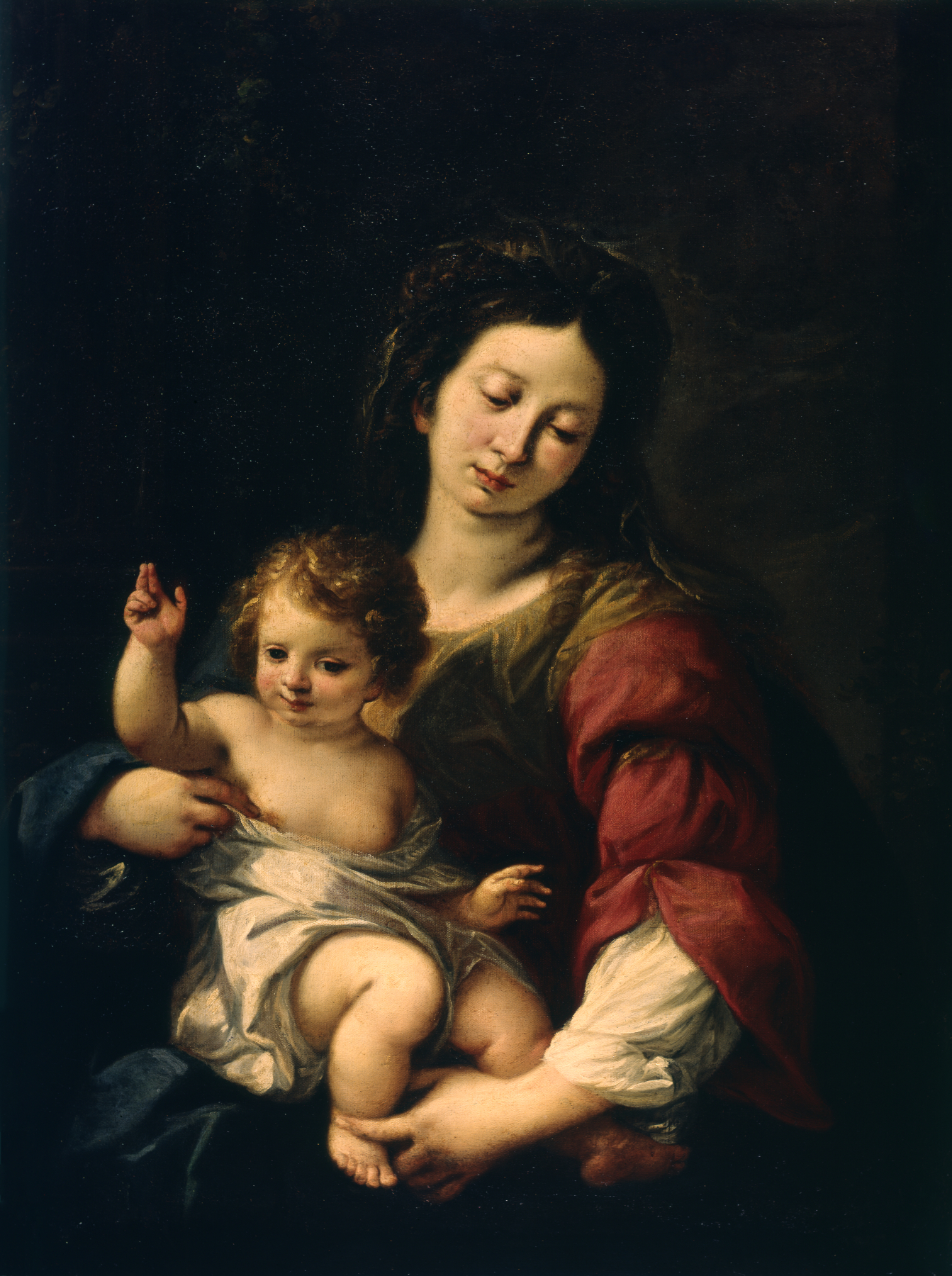Madonna and Child
(Baroque Europe )
The Madonna holds the Christ Child, who raises two fingers in a gesture of blessing. Their tender bond expressed through the sweetness and gracefulness of the figures reveals Nuvolone's study of the famous Madonnas painted by Raphael (1483-1520) (see Walters 37.484). The slightly elongated proportions add elegance to the figural style. By the use of sfumato (the almost imperceptible blending of light and shade), the figures emerge softly and luminously from the dark background. Although the artist was active in the 17th century, the lightness of his manner would have made him eminently attractive to 18th-century patrons.
For more information on this painting, please see Federico Zeri's 1976 catalogue no. 378, p. 496.
Inscription
Provenance
Provenance (from the French provenir, 'to come from/forth') is the chronology of the ownership, custody, or location of a historical object. Learn more about provenance at the Walters.
Cardinal (?) [label on reverse reads "la possession de Cardinal..."; Prince Napoléon, 1868 (?) [label on reverse reads: appartient au Prince Napoléon Palais Royal 1868]; Don Marcello Massarenti Collection, Rome [date and mode of acquisition unknown] [1897 catalogue: no. 185, as Guercino]; Henry Walters, Baltimore, 1902, by purchase; Walters Art Museum, 1931, by bequest.
Conservation
| Date | Description | Narrative |
|---|---|---|
| Examination | examined for condition | |
| Examination | examined for technical study | |
| 12/1/1948 | Treatment | coated; filled; inpainted; varnish removed or reduced |
Geographies
Italy, Lombardy (Place of Origin)
Measurements
Painted surface H: 39 5/16 x W: 31 5/8 in. (99.8 x 80.4 cm)
Credit Line
Acquired by Henry Walters with the Massarenti Collection, 1902
Location in Museum
Accession Number
In libraries, galleries, museums, and archives, an accession number is a unique identifier assigned to each object in the collection.
In libraries, galleries, museums, and archives, an accession number is a unique identifier assigned to each object in the collection.
37.463


